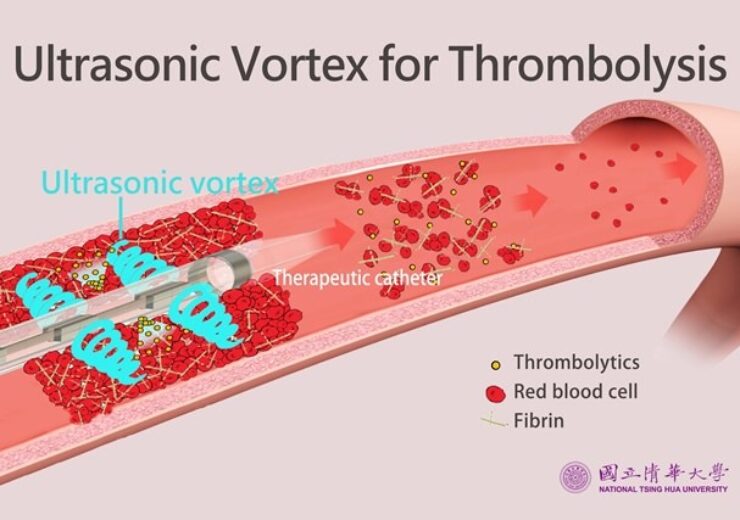Claimed to be the first of its kind in the world, the ultrasonic vortex thrombolytic device is designed to treat two common thrombosis called pulmonary embolism (PE) and deep vein thrombosis (DVT)

NTHU researchers have developed has developed a 0.2-mm ultrasonic device. (Credit: National Tsing Hua University)
A research team from Taiwan’s National Tsing Hua University (NTHU) has developed ultrasonic vortex thrombolytic device for the safe and rapid treatment of thrombosis.
Claimed to be the first of its kind in the world, the ultrasonic vortex thrombolytic device has received patents in the US and European Union (EU) regions.
Designed under the leadership of NTHU’s biomedical engineering and environmental sciences professor Dr Chih-Kuang Yeh, the new device is said to address two common thrombosis called pulmonary embolism (PE) and deep vein thrombosis (DVT).
Both PE and DVT are said to affect up to 10 million people per annum across the globe. DVT is the primary reason for PE, which may result in heart failure and has mortality rate up to 65%.
Yeh’s team has developed a 0.2-mm ultrasonic device, by working with industrial partners.
The device holds the potential to generate tornado-like ultrasonic vortex and create a strong turbulent around the thrombus, helping to increase penetration of thrombolytic drugs and result in efficient thrombolysis.
According to the researchers, the residue of the dissolved thrombus is 0.001cm.
In a statement, Yeh said: “I once saw a blood clot that was over 40-cm long. Only using medication to dissolve them is just too slow.
“It’s like washing clothes. Only soaking the clothes in detergent won’t be enough. Agitation by a washing machine is an essential step to get clothes clean quickly.”
Yeh also claimed that animal studies have demonstrated results of 60% thrombus shrinkage in the mice brain after applying ultrasonic vortex for 10 minutes.
The team is working on applying ultrasonic vortex for noninvasive thrombolysis to efficiently treat embolisms in the brain.
The researchers also see the possibility of treating neurological disorders such as Parkinson’s disease and epilepsy, by combining it with microbubbles for controlled drug release.
